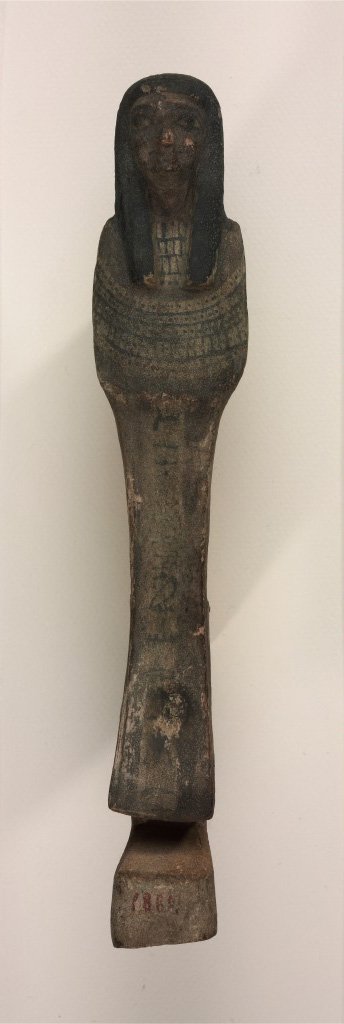
Ptah-Sokar-Osiris figure
Egyptian Art

| Date | 2nd-1st centuries BC |
|---|---|
| Object type | tomb equipment |
| Medium, technique | wood, painted |
| Dimensions | 50 × 17.5 × 18.5 cm |
| Inventory number | 51.1963 |
| Collection | Egyptian Art |
| On view | This artwork is not on display |
The canopic chest was an important part of the funerary equipment of the ancient Egyptians since the Old Kingdom. It was made to hold the four canopic jars that contained the wrapped internal organs removed from the corpse during the mummification process.
The lid of this Ptolemaic wooden chest is now missing. Its contents are also lost. Considering its dimensions and the burial customs of the period, it is unlikely that this chest contained canopic jars; the wrapped organs were rather placed in it directly.
The shape and decoration of the box recall a shrine. The top is painted with a kheker frieze, a motif used to decorate the top ends of tomb and shrine walls. Below the frieze, on the front side comes the image of the mummified Osiris, king of the underworld, who wears a crown. The rear side is painted with the djed pillar, the backbone of Osiris, which, as the symbol of stability and endurance, provided protection for the deceased. On t he right and left sides appear two of the four sons of Horus: the human-headed Imsety and the baboon-headed Hapy.
A stripe representing the façade of a shrine runs along the bottom of the side bearing the image of Osiris. The bottom on the other sides is decorated with a stylised version of the shrine façade.
This record is subject to revision due to ongoing research.